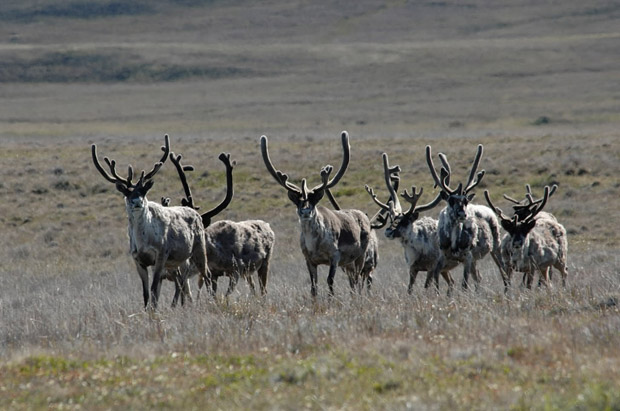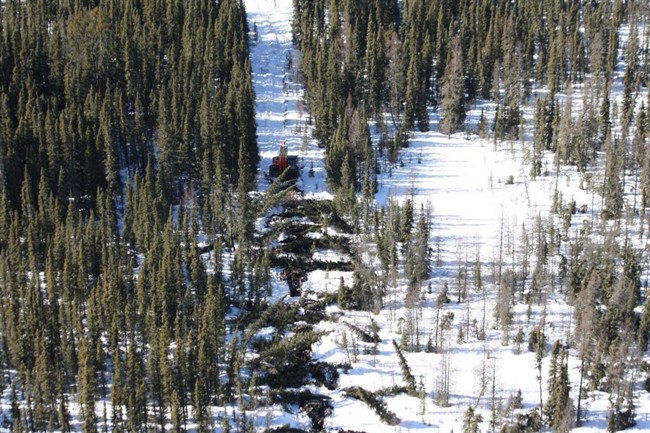Cenovus is planning a $32-million project that aims to restore the habitat of dwindling caribou populations around its oilsands sites in northeastern Alberta over the next 10 years.

Decades of industry activity in the region have sliced up the boreal forest where the animals live, creating openings that make them more vulnerable to predators.
READ MORE: Alberta considers fencing off calving pens for caribou in impacted forests
The Calgary-based company has been working since 2008 on pilot projects to help protect the threatened species.
The new project aims to replant forests along old access roads and seismic lines in an area covering 3,900 square kilometres — more than 10 times what the company has accomplished through its early-stage work.
The company’s move comes a week after the Alberta government released a draft plan that calls for the protection of an additional 18,000 square kilometres of caribou habitat, bringing the province-wide total to 49,000 square kilometres.
READ MORE: Alberta backs off energy leases on caribou range
The provincial plan also involves working with industry to ensure the restoration of 10,000 kilometres of industry-caused land disturbances in caribou habitat the western part of the province.
The population of the Cold Lake caribou herd in northeastern Alberta, whose habitat range overlaps with Cenovus oilsands sites, is estimated at 150 animals and numbers are dropping.

The industry’s footprint has essentially created “highways” for moose and deer looking for young grasses to munch on and that, in turn, attracts predators such as wolves and bears, said Jon Mitchell, the company’s vice president of environment and sustainability.
“And it just so happens that they stumble across caribou as well and that’s caused a lot of the issue,” he said in an interview.
“Caribou aren’t used to having that kind of predator density there and their strategy tends to be to hide and that hasn’t worked very well.”
The Cenovus project involves planting some four million seedlings and making sure conditions are right for the new trees to grow.
To help the new trees along, the company plans to build soil mounds in damp, mushy areas and bending some of the trees along the edge of the corridor to provide the right amount of shade and protection.
Mitchell said the Cenovus plan is being undertaken separately from the Alberta one, but the company has been keeping the provincial government in the loop and sharing its knowledge. The province’s range plan for Cold Lake area is expected in 2017.
“At this stage it’s been very collaborative with respect to making sure that those projects work together and don’t compete against one another,” said Mitchell.
“These techniques are ones that can be applied in any caribou habitat so our focus has been on demonstrating their effectiveness.”
Simon Dyer, with the Pembina Institute, an environmental think-tank, said the Cenovus and Alberta plans together can make a big difference for caribou.
“This is a bigger voluntary restoration commitment than we’ve seen from any other company, so they deserve credit for that,” he said in an interview.
“What Cenovus is proposing here is very significant by one company but this needs to be a model that every company operating in caribou range needs to be thinking about. The government needs to think about what incentives and tools it can put in place to encourage or mandate this level of restoration.”

Comments